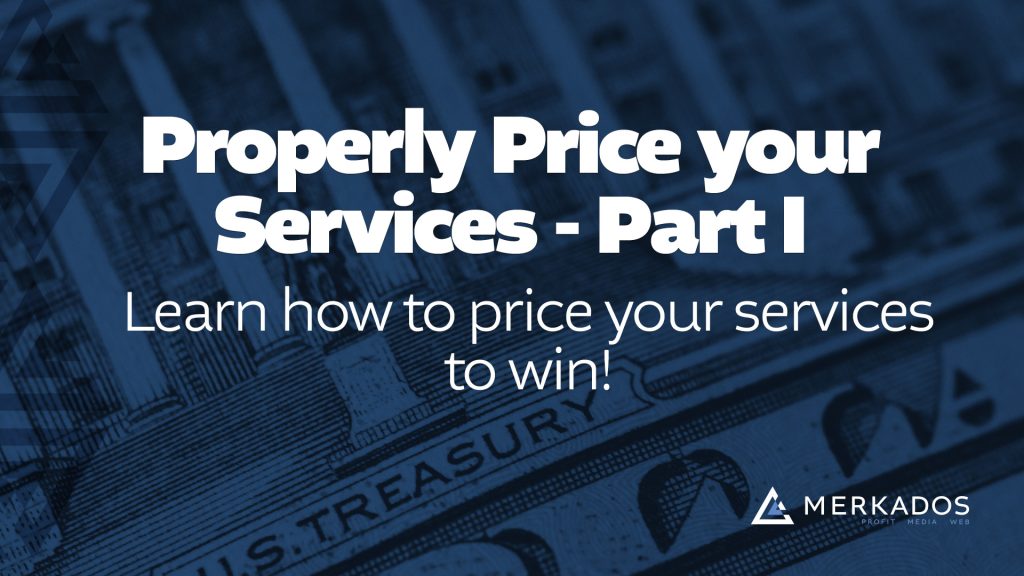How to correctly price your services or products
A frequent question that I receive from our clients as an internet marketing strategist and consultant is: “How do I price my services.” More specifically, what are the steps to correctly price my product or service?
I have a client just the other day that had a similar question. He just started his small business as a financial advisor but had some questions about his pricing structure. I first asked him to share with me how much he was charging for his services. Then, I proceeded to ask him how much were other people in his industry charging for similar services.
One thing I discovered right away was that he was immediately sure that he was charging way less than all of the others. He also believed that the quality of services that his competitors were providing, in his own view, was a lot lower as well. Believe me when I tell you, this story is not uncommon at all.
His explanation was one that I have heard many times already. He said: “I can’t charge more because I feel that people wouldn’t buy my services, they will end up with somebody else!”
One of the main fears of non-marketers and even some marketers as well is precisely this.
Somewhere in our subconscious mind, we believe that if we lower our price (sometimes even give our services for free), people won’t hesitate to buy from us. Also, it gets rid of the nervousness associated with doing a good job. In other words, with a high price people associate responsibility. However, with a low price people associate exactly the opposite. In their minds they think that if they charge a high price, then the expectation of their service is going to be too high for them to fulfill and they will ultimate fail.
Now all of these are fair assumptions and fear, however they are all wrong and they will hurt you in the short and long run, and here is why.
First of all, you have to understand that price is a component of the mix of marketing and that price is not only the associated value for the exchange of services for monetary equivalent, but also it carries information. For example, when we see the price of a t-shirt, we don’t just take the price and automatically think of monetary exchange. As human beings we “read” into the price.
Have you ever been at a store trying to decide between two brands of a new product that you need? When you see the price, it becomes a decision factor, however, not necessarily to the benefit of the cheapest. Why? Because the cheapest also carries the message that it probably isn’t as good as the other.
In our minds the explanation that we find for the low cost is that probably is not as good as the other one that is more expensive. We create this mental stories to explain our beliefs and those mental stories can be absolutely untrue. As intelligent beings we need reasons to make the best decisions. We ponder every little thing. For example, you may end up buying one particular product just because your mom used to buy the same one, not because it is the best choice. In your mind, perhaps if your mom (authority figure) chose that one, then it should be good.
The key thing to identify here is that prices carry information. If you are perceived as “cheap” people may do business with you, but they will expect you to be consistent with their perception: cheap. What do we normally think of something cheap? Something that will break easily, that won’t last, that isn’t good enough, that is only a temporary fix.
In our next post, we’ll dive deeper into how to properly price your offering in a way that underlines your competitive advantage, rather than work against it.

